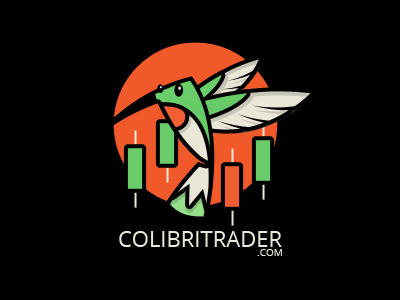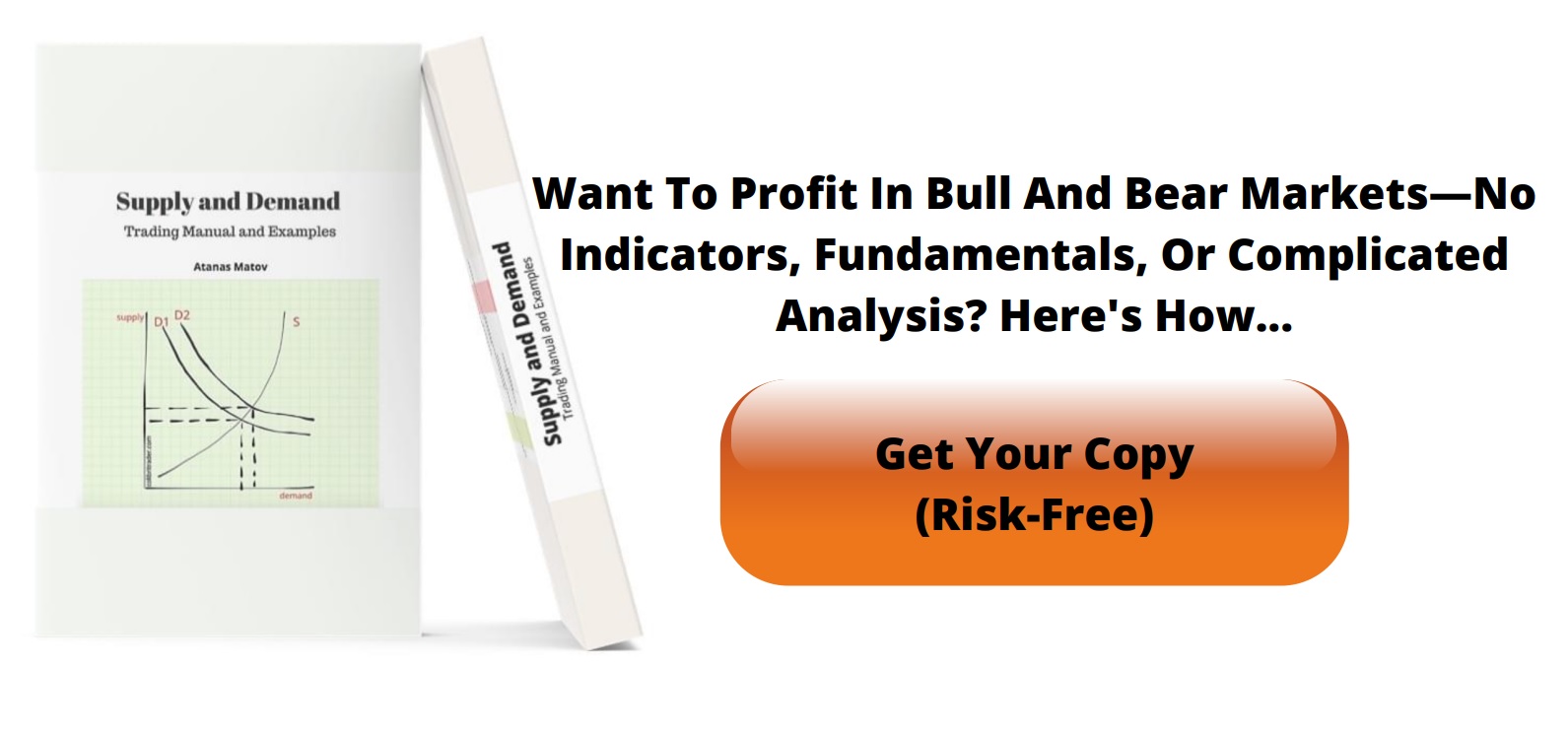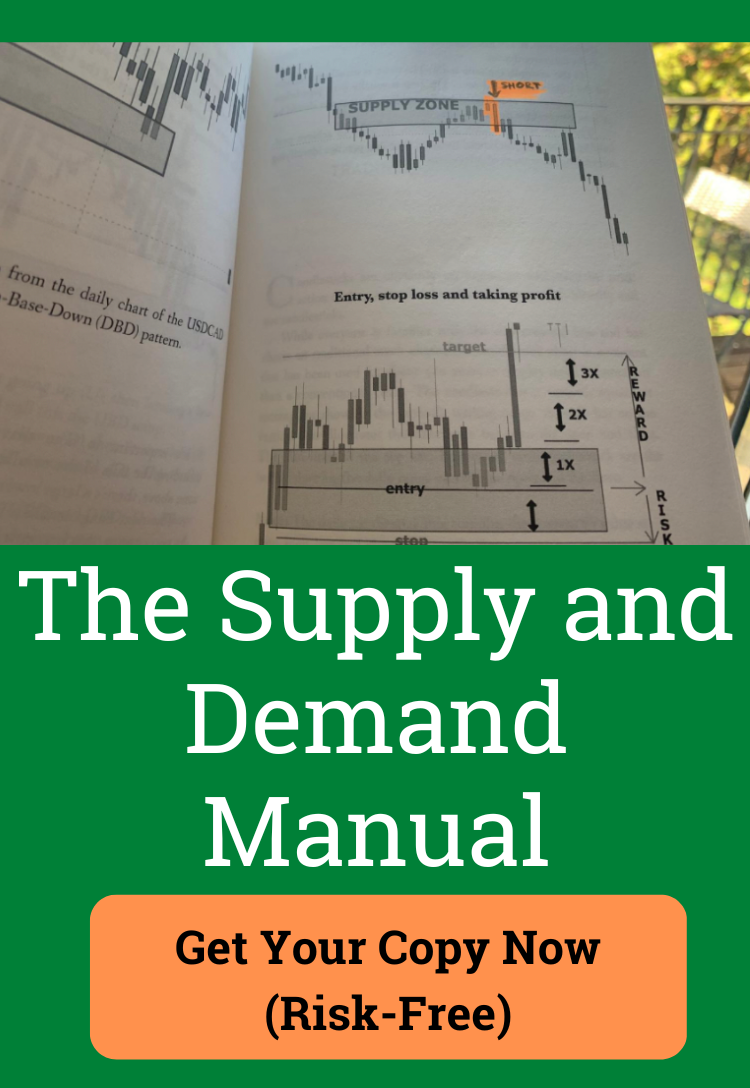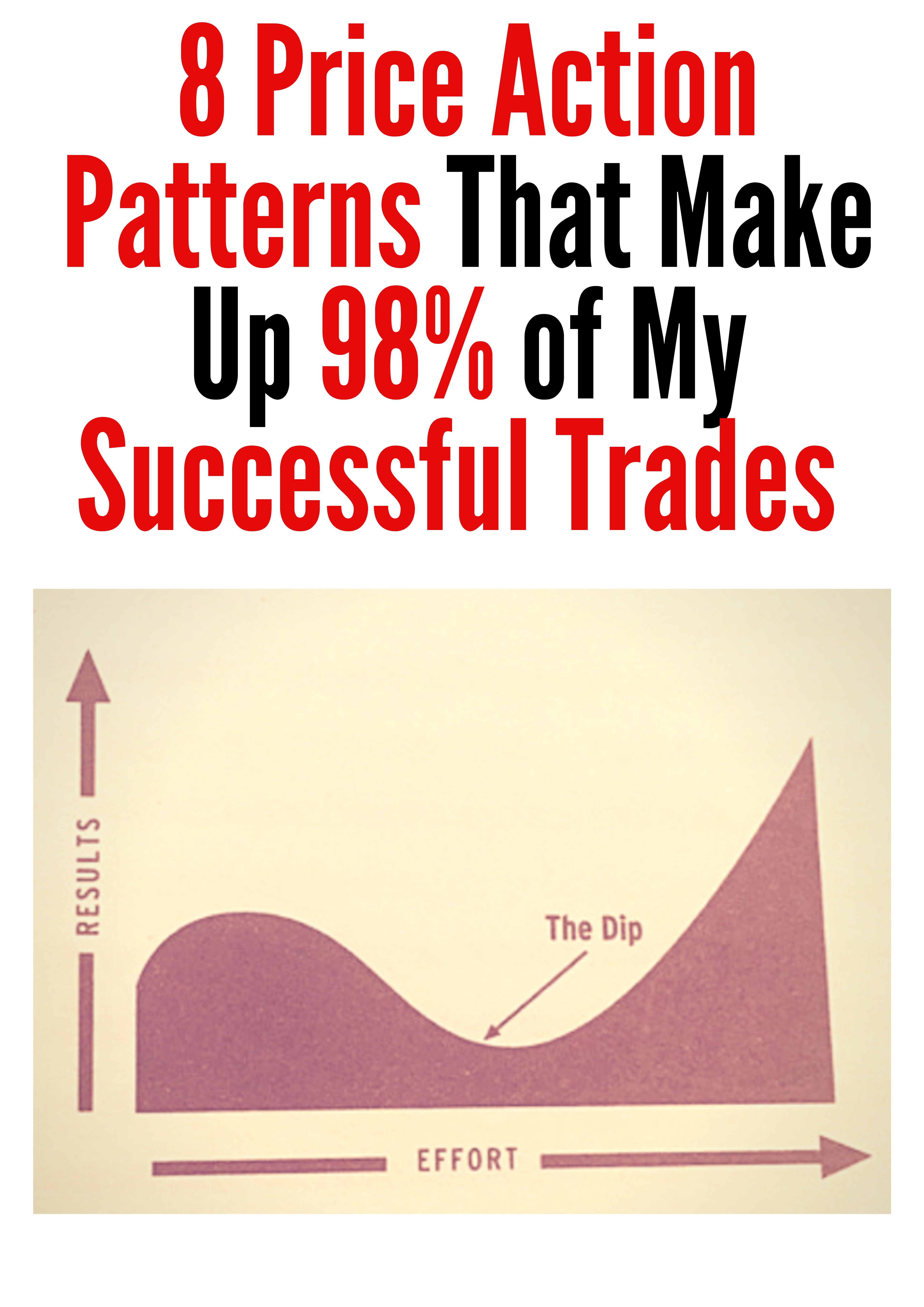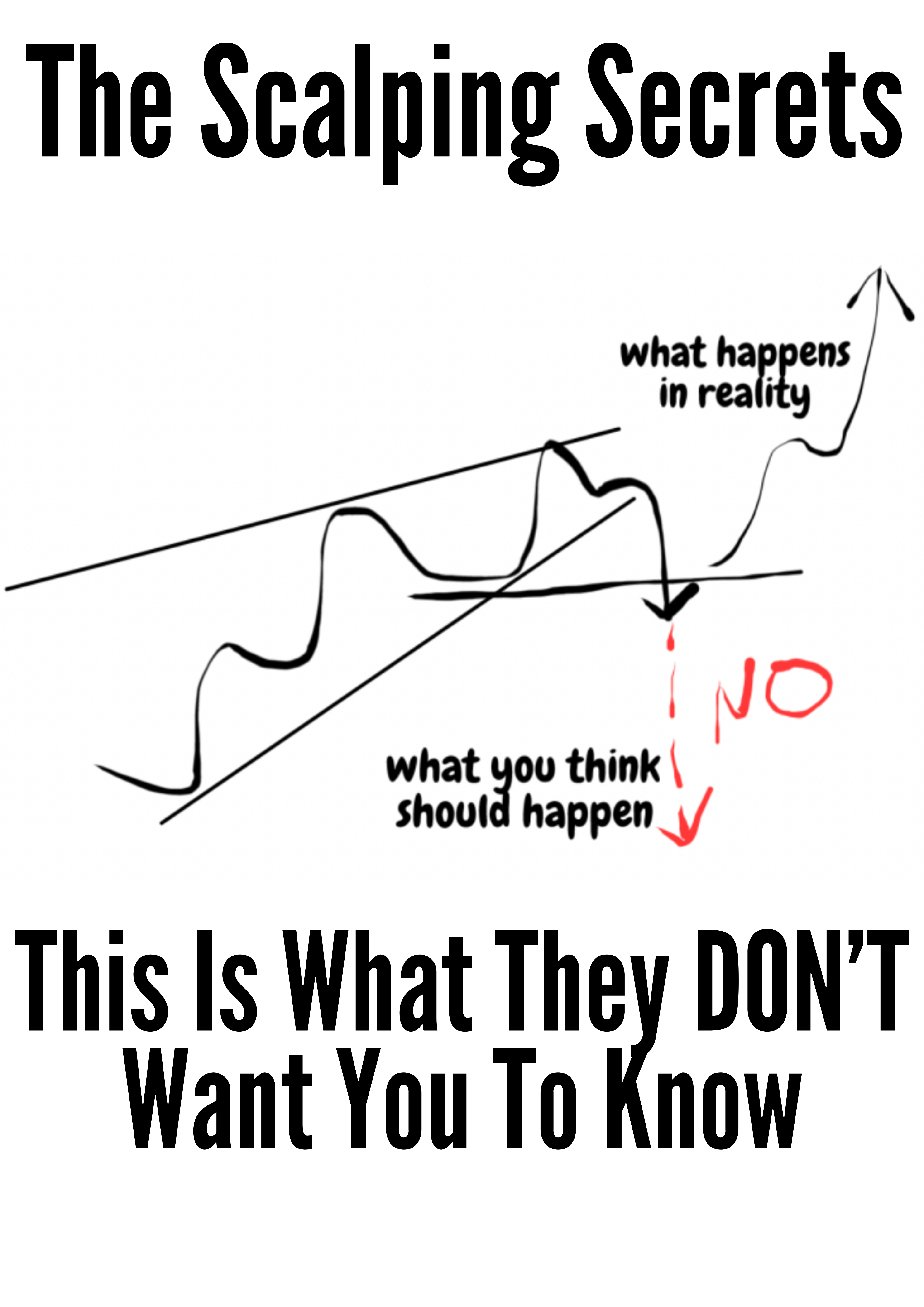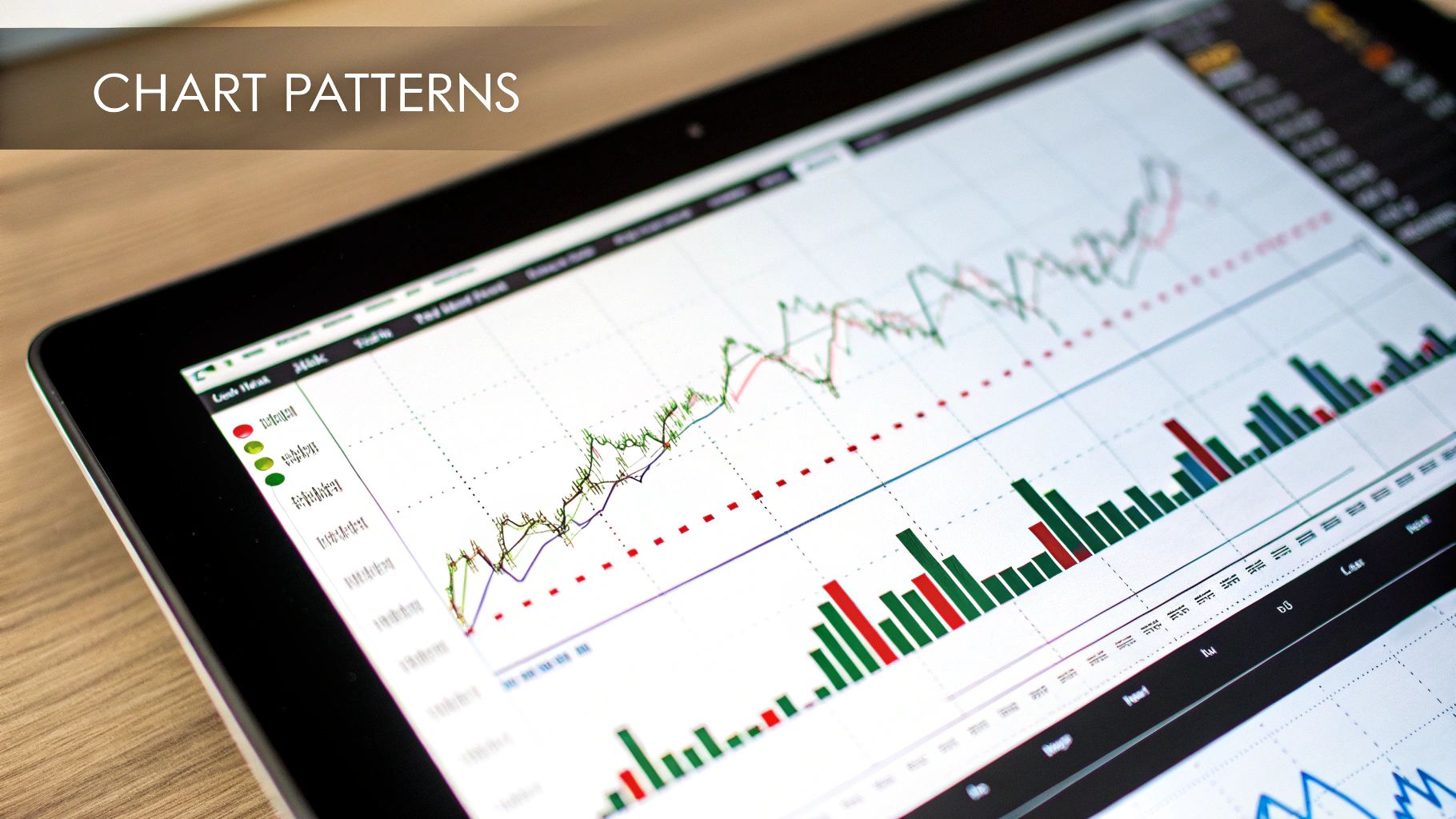8 Essential Trading Books for Beginners in 2025
Embarking on a trading career can feel like navigating a vast ocean without a map. The sheer volume of information, conflicting strategies, and so-called "gurus" can be overwhelming, often leading to costly mistakes and a quick exit from the markets. The solution isn't to find a secret indicator or a perfect algorithm, but to build a solid, unshakable foundation of knowledge. This is where the right collection of trading books for beginners becomes an invaluable asset, acting as your compass and chart through the complexities of financial markets.
This guide is designed to cut through the noise. We have curated a list of essential books that provide the bedrock principles every new trader must understand, from market psychology and risk management to technical analysis and fundamental valuation. Each book has been selected not just for its content, but for its ability to instill the core philosophies that align with a disciplined, price-action-focused approach to trading. Instead of just listing titles, we will dive into what makes each book a cornerstone of a successful trading education.
You will learn more than just theory. We will break down the key takeaways from each selection, offering practical insights on how to apply these timeless lessons to your daily trading routine. We’ll explore the psychological frameworks necessary to maintain discipline, the analytical skills to interpret market movements, and the strategic wisdom to build a robust trading plan. This isn't just a reading list; it’s a structured curriculum designed to equip you with the mental and technical tools needed to navigate the markets with confidence and clarity. Let's begin building your foundational trading library.
1. Market Wizards by Jack Schwager
Market Wizards isn't a "how-to" manual filled with technical patterns; it's something far more valuable for a beginner. Author Jack Schwager sits down with trading legends like Bruce Kovner, Paul Tudor Jones, and Ed Seykota, and through a series of incisive interviews, he uncovers the mindsets and principles that fueled their monumental success. This book earns its top spot because it tackles the most overlooked aspect of trading for newcomers: the psychological framework.
Instead of giving you a specific system to follow, the book reveals a crucial truth: there is no single holy grail. Each "wizard" had a unique methodology, from fundamental analysis to pure technical trading. Their shared traits were not their strategies but their discipline, risk management, and relentless self-analysis. This makes it one of the most essential trading books for beginners, as it instills the right mindset before you even place your first trade.
Key Takeaways for New Traders
The primary lesson from Market Wizards is that your psychological approach is more important than your technical indicators. The traders Schwager interviews consistently emphasize discipline, patience, and the ability to accept losses without emotional turmoil. They treat trading as a business, not a get-rich-quick scheme.
A recurring theme is the paramount importance of risk management. Paul Tudor Jones, for instance, focuses obsessively on his downside risk before ever considering the potential profit. This is a game-changing perspective for a novice who might be fixated only on potential gains.
Colibri Trader Connection: The principles in Market Wizards perfectly complement a price-action trading approach. Price action requires you to interpret market psychology through chart movements. Understanding the discipline and risk control of the "wizards" provides the mental fortitude needed to trust your analysis of supply and demand, wait for high-probability setups, and manage trades effectively without emotional interference.
How to Apply Its Lessons
- Develop a Trading Plan: Inspired by the wizards, outline your rules for entry, exit, and risk management before entering the market.
- Keep a Trading Journal: Document your trades, including your emotional state and the reasoning behind your decisions. This practice of self-review is a common thread among the book's subjects.
- Prioritize Capital Preservation: Implement strict risk rules, such as risking no more than 1-2% of your capital on any single trade.
While Market Wizards won't teach you how to read a candlestick chart, it will provide the foundational wisdom that prevents you from blowing up your account. It’s the strategic and psychological bedrock upon which all technical skills should be built.
2. A Random Walk Down Wall Street by Burton Malkiel
A Random Walk Down Wall Street might seem like an odd choice for a trading list, as it famously champions passive index investing over active trading. However, its inclusion is deliberate and crucial. Burton Malkiel's classic provides an essential, sobering dose of reality that every aspiring trader needs to understand before they risk a single dollar. It meticulously explains the efficient-market hypothesis, which argues that market prices reflect all available information, making it nearly impossible to consistently "beat the market."
This book earns its high placement because it forces you to respect the game you're about to play. Malkiel uses decades of data, historical examples of market bubbles like the dot-com boom, and statistical analysis to show just how difficult it is to outperform a simple S&P 500 index fund. Understanding this perspective is vital for any new trader, as it grounds your expectations and highlights why disciplined strategy and risk management are not just suggestions, they are requirements for survival.
Key Takeaways for New Traders
The most profound lesson from Malkiel's work is an appreciation for statistical probabilities. You learn that the market is a formidable opponent and that any edge you develop will be hard-won. This book challenges the common beginner's assumption that technical analysis is a magic key to guaranteed profits, forcing a more realistic and humble approach.
Furthermore, it provides a comprehensive education on the entire financial landscape, from stocks and bonds to options and futures. It explains how different asset classes work and the historical context behind market behavior. This broad knowledge is invaluable, even for a trader focused purely on price action, as it provides a foundational understanding of the forces moving the charts.
Colibri Trader Connection: The core argument of A Random Walk actually strengthens the case for a pure price-action approach. If most indicators and complex systems fail to provide a consistent edge as Malkiel suggests, then focusing on the raw data of price movement itself becomes a logical path. Price action is the direct footprint of market psychology and order flow. Understanding the statistical difficulty of trading forces you to focus on high-probability setups derived from supply and demand, rather than chasing complex, and often ineffective, indicator-based signals.
How to Apply Its Lessons
- Set Realistic Expectations: Use the book’s data to understand that consistent profitability is an exceptional skill, not a common outcome. This will help you avoid emotional decision-making.
- Build a Core Portfolio: Consider Malkiel's advice by holding a portion of your capital in low-cost index funds as a stable foundation, while using a smaller, separate account for active trading.
- Question Your Strategy: Continuously ask yourself if your trading system truly offers a statistical edge or if your results could be attributed to random luck. This mindset encourages constant refinement.
While this book might not teach you a specific trading strategy, it is one of the most important trading books for beginners because it builds the intellectual and statistical foundation necessary to appreciate why a disciplined, edge-based approach like price action is so critical.
3. Technical Analysis of the Financial Markets by John Murphy
Often called the "bible" of technical analysis, this comprehensive guide by John Murphy is the quintessential textbook for anyone serious about learning to read charts. Unlike philosophical books, this one is a practical, in-depth manual that covers everything from the basic tenets of Dow Theory to advanced indicators and intermarket analysis. It’s an indispensable resource that demystifies how to interpret price action and identify potential trading opportunities.
This book earns its place because it provides the technical vocabulary and framework every new trader needs. It systematically explains chart patterns, indicators like RSI and moving averages, and concepts like support and resistance. For those looking to build a robust trading strategy from the ground up, this is one of the most foundational trading books for beginners available, serving as both a learning guide and a lifelong reference manual.
Key Takeaways for New Traders
The core lesson from Murphy's book is that all relevant market information is reflected in price. By learning to analyze chart patterns and volume, a trader can understand market sentiment and forecast probable future movements without needing to know the underlying fundamental news. This empowers you to make decisions based directly on market behavior.
A crucial takeaway is the concept of confirmation. Murphy teaches that a single indicator or pattern is rarely enough; traders should look for multiple signals to align before committing to a trade. For example, a bullish chart pattern is far more reliable if it occurs at a key support level and is confirmed by a momentum indicator.
Colibri Trader Connection: Murphy’s book provides the essential technical building blocks that underpin a price-action trading methodology. Concepts like support, resistance, and trend analysis are central to identifying high-probability zones. Understanding how these elements form the broader market structure is critical for applying price-action principles effectively. This book gives you the "what," while a price-action strategy shows you "how" and "when" to act on it.
How to Apply Its Lessons
- Start with the Basics: Focus on mastering core concepts like trendlines, support/resistance, and basic chart patterns (e.g., head and shoulders, double tops) before diving into complex indicators.
- Use It as a Reference: Don't feel pressured to read this book cover-to-cover. Use the table of contents to look up specific patterns or indicators as you encounter them in your chart analysis.
- Practice on Historical Data: Open a chart and practice identifying the patterns and signals Murphy describes. This "chart time" is crucial for building your technical eye.
While its sheer volume can be intimidating, Technical Analysis of the Financial Markets is the definitive technical encyclopedia. It provides the grammar and syntax for the language of the markets, enabling you to build any technical strategy you choose.
4. Trading in the Zone by Mark Douglas
Where Market Wizards introduces you to the minds of elite traders, Trading in the Zone takes you directly inside your own mind to rewire it for success. Mark Douglas's classic work is dedicated entirely to trading psychology. It surgically dissects the mental and emotional mistakes that cause 95% of aspiring traders to fail, such as fear, greed, and the inability to accept risk.
Douglas argues that most of us are not psychologically wired to think in the probabilities required for successful trading. This book's power lies in its practical framework for developing a "trader's mindset," where you learn to view the market objectively as a stream of probabilities, not a series of potential personal wins or losses. It stands out as one of the most critical trading books for beginners because it addresses the internal conflicts that sabotage even the most well-researched strategies.
Key Takeaways for New Traders
The core message of Trading in the Zone is that consistency is a product of your mindset, not your market analysis. Douglas brilliantly explains how to detach your ego from your trades, allowing you to execute your strategy flawlessly without hesitation or emotional interference. You learn to accept that any single trade can lose, even with a profitable system, and that true success comes from consistent execution over a series of trades.
A fundamental concept is the "five fundamental truths" about the market, which help traders neutralize emotional responses. For instance, knowing that "anything can happen" and that "you don't need to know what is going to happen next to make money" frees you from the pressure of prediction and allows you to focus on managing risk and following your plan.
Colibri Trader Connection: The price-action philosophy at Colibri Trader is built on disciplined execution and objective analysis, making the principles from Trading in the Zone a perfect psychological complement. Price action trading requires you to trust what the chart is telling you, not what you hope will happen. Douglas’s teachings on a probability-based mindset give you the mental strength to execute high-probability price action setups, cut losses without regret, and let winners run without fear, all of which are essential for long-term profitability. You can explore more about developing a professional trading mindset here.
How to Apply Its Lessons
- Embrace a Probabilistic Mindset: Before each trade, remind yourself that the outcome is uncertain and that your edge plays out over many trades, not just this one.
- Define Your Risk in Advance: Know exactly where you will exit if the trade goes against you and accept that loss as a business expense before you enter.
- Focus on Process, Not Profit: Judge your performance on how well you followed your trading plan, not on whether a single trade won or lost.
This book won't provide a trading system, but it will give you the psychological operating system needed to run any system effectively. It’s the mental armor every new trader needs before stepping onto the battlefield of the markets.
5. The Intelligent Investor by Benjamin Graham
At first glance, The Intelligent Investor might seem out of place on a list for traders. Penned by the father of value investing, Benjamin Graham, this book is the undisputed bible for long-term investors, not short-term speculators. However, its inclusion is deliberate. It provides an essential education on market psychology, risk management, and fundamental valuation that is immensely valuable for any market participant, regardless of their time horizon.
The core of the book is the distinction between investing and speculating, and the concept of "Mr. Market," a manic-depressive business partner who offers you different prices every day. Graham teaches you to use market fluctuations to your advantage rather than being controlled by them. While you might not be performing deep fundamental analysis for a day trade, understanding these principles helps you remain rational when the market becomes volatile. This makes it one of the most foundational trading books for beginners, offering wisdom that transcends strategy.
Key Takeaways for New Traders
The most powerful lesson from Graham is the principle of "Margin of Safety." This means only buying an asset at a significant discount to its intrinsic value, creating a buffer against errors in judgment and bad luck. For a trader, this concept can be adapted to mean only taking trades with a clear and substantial edge, where the potential reward heavily outweighs the risk.
Graham's exploration of market psychology is also critical. He details how greed and fear drive market bubbles and crashes, giving you a framework to understand crowd behavior. Recognizing when the market is acting irrationally is a powerful skill for a price action trader who needs to identify unsustainable moves and potential reversals.
Colibri Trader Connection: While price action focuses on chart-based supply and demand, The Intelligent Investor provides the psychological armor needed to execute that strategy. Understanding Graham's "Mr. Market" helps you view price swings with detachment, allowing you to wait patiently for price to reach a high-probability supply or demand zone. The "Margin of Safety" principle reinforces the core price action tenet of seeking high-reward, low-risk setups and avoiding mediocre trades.
How to Apply Its Lessons
- Develop Emotional Discipline: Use the "Mr. Market" allegory to detach emotionally from short-term price movements. See them as opportunities, not threats.
- Adopt a Margin of Safety Mentality: Before entering a trade, ask yourself if the potential reward significantly outweighs the risk. Only proceed if the odds are heavily in your favor.
- Think Like a Business Owner: Approach trading with the same analytical rigor and risk aversion that Graham applied to investing. Analyze your performance, manage your capital, and focus on long-term consistency.
The Intelligent Investor won't teach you about candlestick patterns or moving averages, but it will give you a timeless framework for thinking about risk, value, and market behavior. This psychological and analytical foundation is crucial for surviving and thriving in the markets.
6. Japanese Candlestick Charting Techniques by Steve Nison
While other books on this list focus on mindset and strategy, Steve Nison's classic provides the raw, visual language of the market. Japanese Candlestick Charting Techniques is the book that introduced Western traders to the power of candlestick charts, moving beyond simple bar charts to reveal a deeper story of market sentiment. It’s an indispensable technical guide that teaches you how to interpret the battle between buyers and sellers in a single glance.
This book isn't about complex indicators or algorithms; it’s about reading the price action directly from the source. Nison decodes individual patterns like the Doji (signaling indecision), the Hammer (a potential bottom), and the Engulfing pattern (a strong reversal signal). For anyone serious about technical analysis, this is one of the most fundamental trading books for beginners, as it provides the building blocks for understanding price movements.
Key Takeaways for New Traders
The most significant lesson is that every candle tells a story. The size of the body, the length of the wicks, and its relationship to previous candles provide clues about market psychology and potential future direction. This book transforms a chart from a series of random lines into a narrative of supply and demand.
Nison emphasizes that candlestick patterns gain their power from context. A Hammer pattern appearing at a significant support level is far more meaningful than one appearing in the middle of a range. This teaches new traders the critical skill of confluence, where multiple signals align to create a high-probability setup.
Colibri Trader Connection: This book is the technical cornerstone of price-action trading. The entire Colibri Trader methodology is built upon interpreting the story told by candlestick patterns at key support and resistance levels. Understanding the concepts Nison presents, such as Doji and Engulfing patterns, is essential for identifying the precise entry and exit points we teach. Mastering these patterns is the first step to trading without relying on lagging indicators. For a deeper dive, learn more about understanding candlestick charts.
How to Apply Its Lessons
- Focus on High-Probability Patterns: Start by mastering a few powerful patterns like Doji, Hammer, and Engulfing patterns before trying to memorize dozens.
- Combine with Support and Resistance: Only act on candlestick signals when they appear at pre-identified key market levels. This filters out market noise.
- Practice Recognition: Use historical charts to scroll back in time and practice identifying patterns and their outcomes to build your visual recognition skills.
Japanese Candlestick Charting Techniques won’t give you a complete trading system, but it will give you the ability to read the market’s language. This skill is the foundation upon which any successful price-action strategy is built.
7. How to Make Money in Stocks by William O'Neil
How to Make Money in Stocks offers beginners a structured, data-driven system for finding high-growth stocks. Author William O'Neil, founder of Investor's Business Daily, introduces his famous CAN SLIM methodology, which is a powerful blend of fundamental and technical analysis designed to identify stocks poised for explosive growth before they make their big moves. This book is a must-read because it provides a clear, repeatable process, which is invaluable for a novice trader overwhelmed by infinite strategies.
Unlike purely theoretical books, O'Neil backs his system with extensive research on the greatest winning stocks in market history. He demystifies what qualities companies like Apple, Google, and Netflix had in common before their meteoric rises. This makes it one of the most practical trading books for beginners, as it gives you a concrete checklist to evaluate potential investments, removing much of the guesswork and emotional decision-making.
Key Takeaways for New Traders
The core lesson from O'Neil's work is that the best-performing stocks share specific, identifiable traits related to earnings, new products, and institutional sponsorship. The CAN SLIM system is a seven-point acronym that provides a framework to find these characteristics. For instance, the 'C' stands for Current Quarterly Earnings Per Share, demanding significant year-over-year growth, while the 'M' looks for Market Direction, teaching you to trade in harmony with the overall market trend.
A crucial technical aspect is O'Neil's focus on chart patterns, particularly the "cup-with-handle" formation. He teaches traders how to spot these consolidation patterns and identify the optimal buy point when a stock breaks out on high volume. This emphasis on timing your entry based on price and volume is a game-changer for new traders.
Colibri Trader Connection: The CAN SLIM method's technical components align perfectly with price action principles. O'Neil's focus on chart patterns and volume analysis is a form of reading supply and demand dynamics. Understanding how to spot a proper base breakout, as taught in the book, complements a price-action trader's ability to identify key support and resistance levels where institutional buying is likely to overwhelm selling pressure, leading to a strong upward move.
How to Apply Its Lessons
- Master the CAN SLIM Criteria: Focus on learning one letter of the acronym at a time. Start by screening for stocks with strong recent earnings growth ('C' and 'A').
- Practice Chart Pattern Recognition: Study historical charts of winning stocks to train your eye to spot cup-with-handle and other base patterns.
- Monitor Volume: Pay close attention to trading volume during a potential breakout. A breakout on low volume is often a red flag, while a surge in volume confirms institutional interest.
While the CAN SLIM system is more geared toward growth investing than short-term day trading, the principles of combining fundamental strength with technical timing provide an exceptionally robust foundation for any new market participant.
8. The Disciplined Trader by Mark Douglas
The Disciplined Trader is Mark Douglas’s foundational work on trading psychology, laying the groundwork for his more famous book, Trading in the Zone. It dives deep into the mental mechanics of why most traders fail, identifying the psychological barriers that prevent them from achieving consistent success. This book is less of an abstract discussion and more of a practical guide to re-engineering your mental framework for the realities of the market.
Douglas argues that we enter the trading world with ingrained beliefs and emotional responses that are completely counterproductive to making money. The book provides a step-by-step process for developing the mental skills necessary to overcome these self-sabotaging behaviors. It explains how to build the discipline required to execute a trading plan flawlessly, making it one of the most essential trading books for beginners who find their emotions derailing their decisions.
Key Takeaways for New Traders
The core lesson from The Disciplined Trader is that the market does not care about your hopes or fears; it is an environment of pure, unfiltered probability. Douglas teaches you to detach your self-worth from the outcome of any single trade and to embrace a probabilistic mindset. This shift is crucial for overcoming the fear of being wrong and the greed that leads to impulsive mistakes.
A key concept is creating a mental framework that aligns with the market's nature. Douglas provides practical techniques and exercises to help you identify and neutralize your emotional triggers. For example, he illustrates how common psychological patterns, like the need to be right, directly lead to holding onto losing trades for too long.
Colibri Trader Connection: The Disciplined Trader provides the psychological operating system needed to effectively trade price action. Price action trading requires patience to wait for a setup, discipline to execute without hesitation, and emotional detachment to accept a loss. Douglas's teachings on building mental discipline directly support a trader's ability to consistently apply price action rules, manage risk, and avoid the emotional pitfalls that sabotage a sound strategy.
How to Apply Its Lessons
- Practice Self-Awareness: Use a trading journal to not only log your trades but also your thoughts and feelings before, during, and after each one. This helps identify your specific psychological patterns.
- Define Your Rules Rigorously: Clearly define every aspect of your trading system (entry, exit, risk) to remove subjective, in-the-moment decision-making.
- Focus on Process, Not Profit: Shift your goal from "making money" on a trade to "flawlessly executing your plan." Consistency in process is what leads to long-term profitability.
While Trading in the Zone is often more cited, The Disciplined Trader offers the detailed, foundational steps needed to build the mental architecture for a successful trading career.
Top 8 Beginner Trading Books Comparison
| Title | Core Features / Focus | User Experience / Quality ★★★★☆ | Value Proposition 💰 | Target Audience 👥 | Unique Selling Points ✨ | Price Point / Format 💰 |
|---|---|---|---|---|---|---|
| Market Wizards by Jack Schwager | 16 trader interviews, psychology focus | Inspirational, easy to read ★★★★☆ | Diverse strategies, mindset insights | Beginners seeking inspiration 👥 | Real trader stories, timeless lessons ✨ | Book / Moderate price |
| A Random Walk Down Wall Street by Burton Malkiel | Market efficiency, passive investing | Research-backed, clear ★★★★☆ | Foundation in market theory | Beginners wanting market basics 👥 | Debunks myths, statistical approach ✨ | Book / Moderate price |
| Technical Analysis of the Financial Markets by John Murphy | Charts, indicators, comprehensive guide | Detailed, standard textbook ★★★★★ | Thorough technical analysis resource | Serious beginners & pros 👥 | Extensive charts, CMT standard ✨ | Book / Moderate price |
| Trading in the Zone by Mark Douglas | Trading psychology, mindset | Practical, easy implementation ★★★★☆ | Mental conditioning for consistency | Traders with emotional control issues 👥 | Probability mindset, exercises ✨ | Book / Moderate price |
| The Intelligent Investor by Benjamin Graham | Value investing, fundamentals | Timeless classic, dense ★★★★☆ | Risk management, analytical framework | Beginners in fundamental analysis 👥 | Warren Buffett influence, solid principles ✨ | Book / Moderate price |
| Japanese Candlestick Charting Techniques by Steve Nison | Candlestick patterns, visual analysis | Intuitive, practical ★★★★☆ | Timing entries/exits visually | Visual chart analysis beginners 👥 | Introduced candlesticks in West ✨ | Book / Moderate price |
| How to Make Money in Stocks by William O'Neil | CAN SLIM system, growth stock focus | Systematic, actionable ★★★★☆ | Combines fundamental & technical | Growth stock beginners 👥 | Proven stock selection system ✨ | Book / Moderate price |
| The Disciplined Trader by Mark Douglas | Mental discipline, self-sabotage focus | Practical, psychological ★★★★☆ | Develops trading discipline | Traders lacking discipline 👥 | Psychological exercises, accountability ✨ | Book / Moderate price |
Transforming Knowledge into Profit: Your Next Steps
Your journey from aspiring trader to consistently profitable market participant has just begun. The list of essential trading books for beginners we've explored is not just a reading list; it's a foundational curriculum. From the timeless wisdom of Benjamin Graham's The Intelligent Investor to the psychological fortitude championed by Mark Douglas in Trading in the Zone, each book lays a critical brick in the wall of your trading fortress.
We've navigated the complex worlds of technical analysis with John Murphy, demystified candlestick patterns with Steve Nison, and learned from the legends themselves through Jack Schwager's Market Wizards. These texts provide the theoretical bedrock, the "why" behind market movements and the "how" of structured analysis. They are your university education in the art and science of trading.
But as any seasoned professional will tell you, theory without application is merely trivia. Knowledge becomes power only when it is acted upon. Reading about discipline is not the same as exercising it when your capital is at risk. Understanding a candlestick pattern on a page is a world away from identifying it in real-time and executing a trade with conviction.
From Passive Reader to Active Trader
The critical transition you must now make is from a passive consumer of information to an active practitioner of a defined strategy. The concepts from these books are universal, but your implementation of them will be unique. Your goal is not to memorize every page but to internalize the core principles that resonate with your personality and risk tolerance.
Here are the actionable next steps to bridge that gap:
- Synthesize Your Philosophy: Don't just read; reflect. What core ideas stood out to you? Did Mark Douglas's emphasis on mindset resonate more than William O'Neil's specific CAN SLIM system? Your first step is to distill the wisdom from these books into a personal trading philosophy. This document will be your north star.
- Focus on a Single Strategy: A common beginner mistake is "strategy hopping." You read about candlesticks and try that. Then you read about moving averages and jump to that. Instead, choose one core concept, like the price action and supply/demand principles that underpin our approach, and commit to mastering it. Use what you've learned from these books to support, not replace, a focused strategy.
- Start with Paper Trading: Before risking a single dollar, open a demo account. Apply the principles from Technical Analysis of the Financial Markets and the discipline from The Disciplined Trader. Use this risk-free environment to build screen time, test your synthesized philosophy, and make your first hundred "mistake" trades without financial consequence.
- Develop a Rigorous Trading Plan: Your trading plan is the operational manual for your business. It should explicitly define what you trade, your entry criteria, your exit rules (for both profits and losses), and your risk management parameters. This is where the theoretical becomes practical.
The Ultimate Goal: Unconscious Competence
The journey through these trading books for beginners is the first step toward achieving what psychologists call "unconscious competence." It's the state where correct trading behaviors become second nature. You no longer have to consciously recall a rule from a book; you simply see the market setup and execute your plan with fluid precision, free from emotional turmoil.
This level of mastery doesn't come from reading one more book. It comes from the deliberate, focused, and persistent application of the foundational knowledge these incredible authors have shared. You have the map; now it's time to take the first step on the path.
Reading these essential books provides the foundational "what" and "why" of trading. To truly succeed, you need a proven framework that shows you "how" to apply these concepts in live markets. Colibri Trader provides exactly that, with a price-action-focused strategy that integrates market psychology, technical analysis, and risk management into a complete, actionable system. Visit Colibri Trader to see how our courses and community can accelerate your journey from knowledgeable reader to profitable trader.
